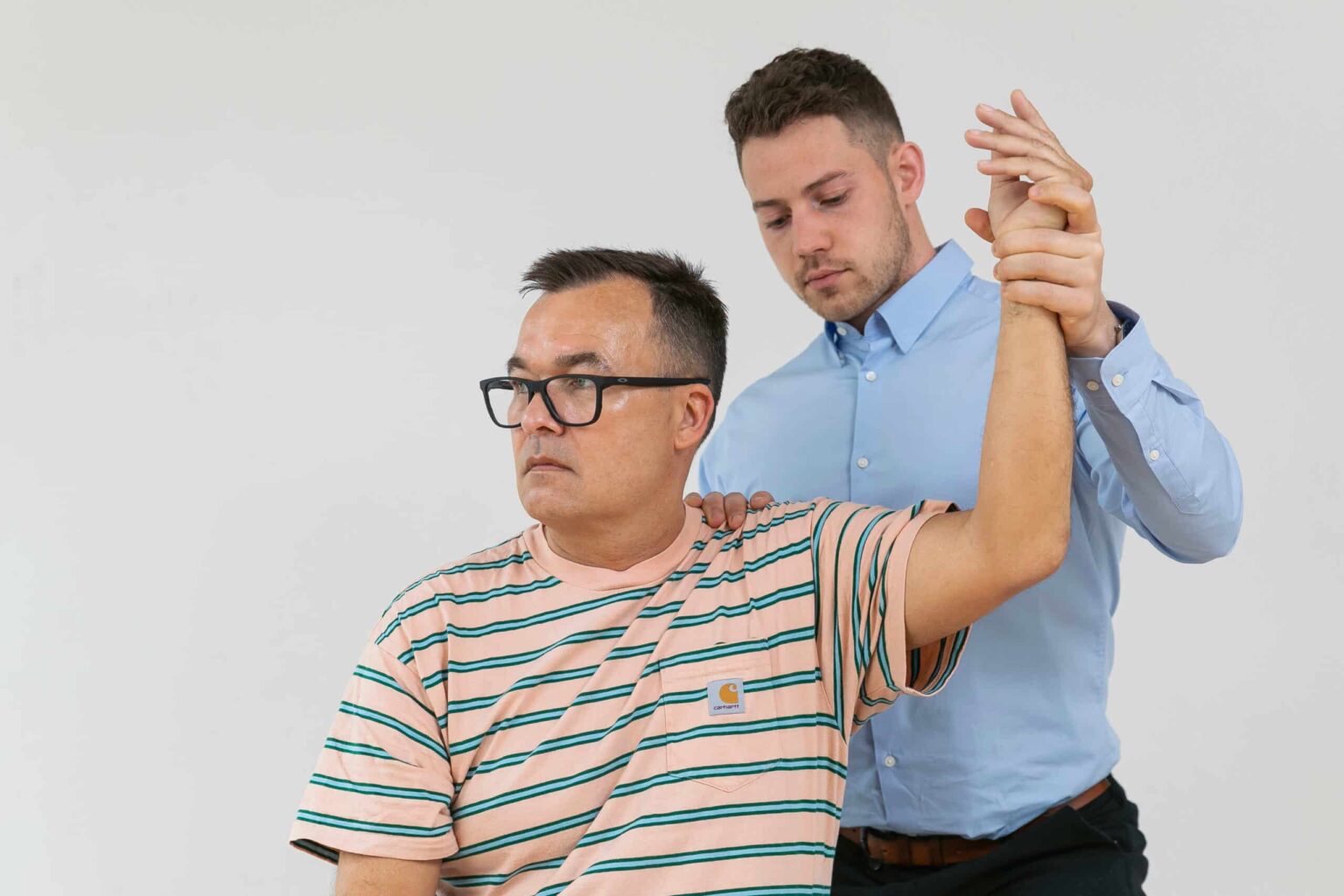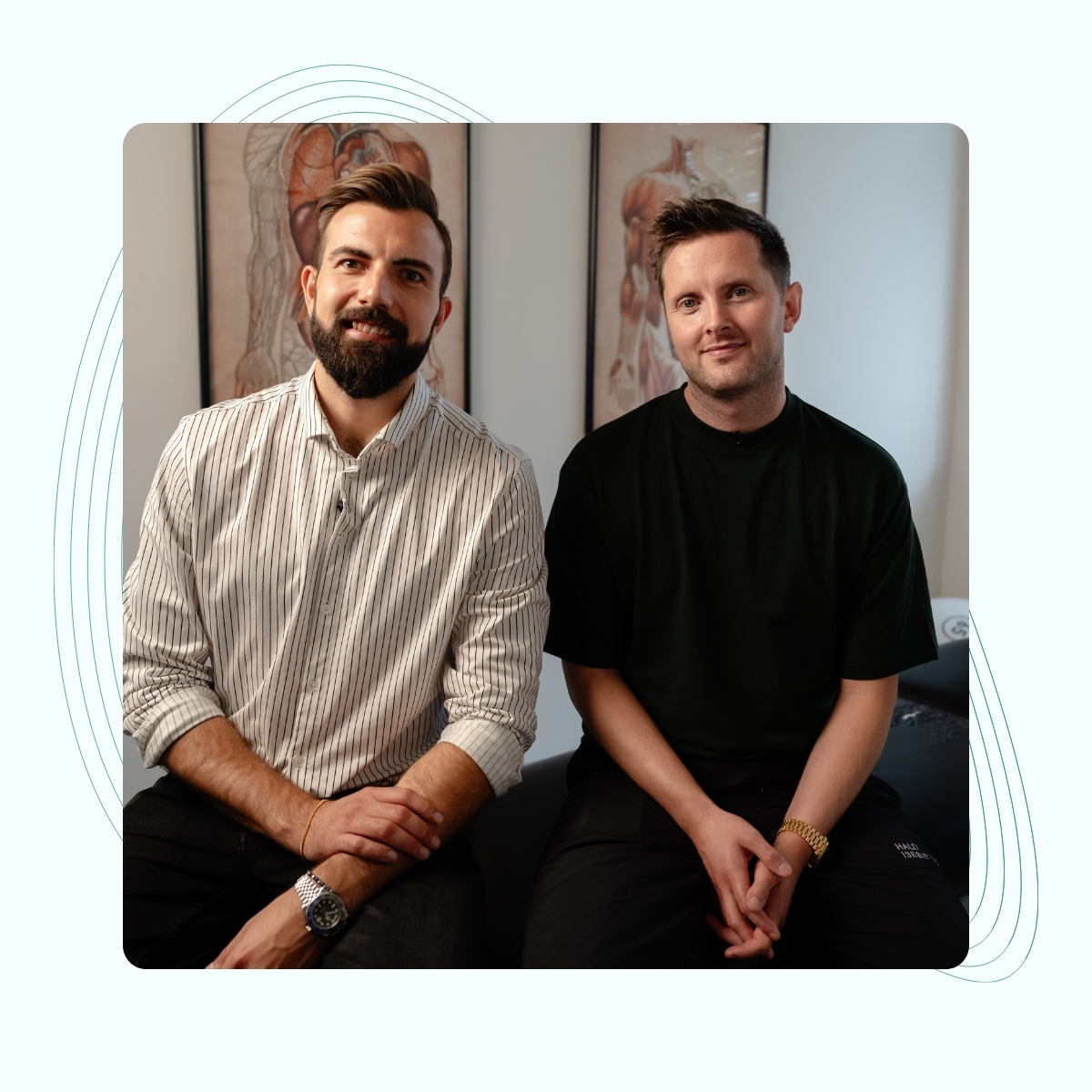We treat
Disc herniation
Learn more about herniated discs & its complications
Disc herniation in the back
Back pain is one of the most frequent complaints in the musculoskeletal system, however, only a small amount of all those with back pain develop a herniated disc! Some of all those who suffer from lower back pain will at some point have a herniated disc.
Are you suffering from a herniated disc? Book an appointment today
Jump to section [Vis]
Mechanism of disc herniation
Between our vertebrae are small cartilage discs (discus) made of a rubber-like material, their primary function is to absorb shock and keep the spine flexible.
A disc is made up of a strong fibrous outer part (Anulus fibrosus) and a more fluid center (Nucleus). A herniated disc is a protrusion of the disc material nucleus, which thereby creates a compression of the nerves that run from the back down into the legs or arms. This explains why people with a herniated disc, for example, experience radiating pain down the leg.
Several studies have shown that you can have a herniated disc without having symptoms, which means that it is not the herniation itself that causes the pain, but rather irritation of the nerve root or inflammation in the disc itself.
A herniated disc can occur in connection with heavy lifting, a sudden incorrect movement, but they can also occur insidiously over a longer period of time.
Disc herniation occurs when a cartilage disc (discus) between two vertebrae ruptures, causing the soft core (nucleus) to be pushed out and press on a spinal nerve or occasionally on the spinal cord itself.
The problem is often discovered too late, as the disc is only sensitive at the very edge, and the nucleus therefore breaks through before a pain reaction occurs.

Disc herniation healing time
A herniated disc usually resolves on its own after 3-6 months and it takes 6-12 months for the disc to heal. Effective and complete recovery after a herniated disc is necessary to regain the body’s normal function.
Osteopathic treatment can help identify problems in the musculoskeletal system, correcting these so that your body’s balance is restored and thereby creates optimal healing conditions.
Unfortunately, many people experience pain for longer than necessary, which can be due to several reasons:
-
- Infection of the disc in the form of so-called Modic changes is a more serious late consequence. Modic changes are a disorder that can cause constant local pain in the back. Treatment with antibiotics shows promising results.
-
- Scar tissue or impaired healing of the disc leading to irritation of surrounding nerves. Poor healing is often caused by factors such as: poor posture, misalignment of joints, poor blood supply due to muscle tension in the area, etc.
-
- Muscles and joints can cause persistent back pain because the body has been compensating for the pain from the herniated disc for a long period of time. The consequences of this can be incorrect movement patterns, reduced mobility and pain when moving.
Development of a herniated disc
Incipient protrusion disc
Some of the disc is pushed out which can cause pain and stiffness in the back.
Protruding disc
Obvious protrusion of the disc which presses on surrounding tissue. Pain in the buttocks and back may be experienced.
Disc herniation – when the damage has occurred
There is a hole in the cartilage disc and fluid has leaked out. Pain in the buttocks, hamstrings and calves may be experienced. Free disc herniation – the prolapsed material is completely pushed out and presses on surrounding tissue. Pain in the buttocks, hamstrings and calves is experienced.

What does a herniated disc feel like?
Symptoms of a herniated disc are described as stabbing pain in the back, which can cause tingling / prickling / stabbing down one leg/arm, which can exceptionally radiate to both sides. The pain is relieved by reducing compression of the disc, for example by lying down.
Conversely, you will often notice a worsening of the pain when lifting heavy objects, bending forward or bending sideways in the back, as this increases the compression of the disc.
Depending on the severity, a herniated disc can cause pain locally in the back or radiating to the extremities, altered sensation and reduced strength in the leg, which makes it difficult to stand on tiptoe or heels.
NOTE! You should contact your doctor immediately if you experience severe loss of strength, difficulty walking, or loss of control over urination, defecation, or sexual function.
Causes of herniated disc
The cause of a herniated disc can be either traumatic, such as from an incorrect lift, an unfortunate fall, an accident or the like. It can also be compensatory, if the lower back overworks to compensate for lack of mobility elsewhere in the body, for example in the hip, knee or foot. When this compensation continues for a long time and the blood circulation in the lower back is poor, the risk of a herniated disc will be significantly greater.
Symptoms of herniated disc
Typical symptoms of herniated disc
Radiating pain in the leg, calf and foot, pain that often worsens when coughing, numbness in the leg and/or reduced strength in the leg.
Severe symptoms of herniated disc
Problems with bowel and bladder function, sexual problems, pain and numbness in the groin and lower abdomen, and/or spasticity or stiffness in parts of the body supplied by the sacral vertebra.
If you experience these symptoms, call your doctor.

Osteoarthritis in the back and herniated disc
Osteoarthritis in the back (as elsewhere in the body) occurs with increasing age. In the lumbar spine, it is the spine itself that is affected. Over time, the spinal discs become worn out and lose some of their absorbing effect, which can cause pain, reduced mobility and in some cases be the basis for a herniated disc.
Disc herniation is most often seen in the 30-50 age group, but it is generally not possible to say why some people develop osteoarthritis while others do not.
There are a number of factors that are suspected of having an influence on developing osteoarthritis – heavy and strenuous lifting, heredity, acute trauma to the back and being overweight are some of the causes that are linked to the development of osteoarthritis in the back.
Lumbar disc herniation and dizziness
A disc protrusion or a herniated disc can cause a situation where the spinal nerves in the lower back and sometimes the spinal cord itself become pinched.
Around the spinal cord and the roots of the spinal nerves we have the meninges. Between the meninges and the central nervous system we have cerebrospinal fluid.
In some cases of larger disc herniations, especially central disc herniations where the spinal cord is compressed, we experience that patients can also experience dizziness.

Treatment of herniated disc
Disc herniation is treated in most cases without surgery. Treatment consists of relieving the back, possibly painkillers for a period of time, as well as rehabilitation of the stabilizing muscles of the back and possible direction-specific exercises, such as the McKenzie method, for which there is good evidence in connection with low back pain. (Szulc, Pawel et al., 2015).
A holistic assessment and treatment process is important to find and optimize the areas that the lower back compensate for, so that the herniated disc can heal.
It is essential for healing to optimize mobility and blood circulation in the area around the prolapse.
There is a focus on optimal function and mobility around the lower thoracic vertebra and upper lumbar vertebra, as this area is crucial for blood flow. Central treatment of the heart, lungs, chest, respiratory muscles is also part of optimizing blood circulation and thereby the healing potential.
How does a herniated disc go away?
In most cases, a herniated disc is treated without surgery. A herniated disc can go away on its own spontaneously with proper relief, however, gentle osteopathic techniques for increased blood supply and mobility in the back can improve the healing of a herniated disc, so that you can return to normal everyday life quickly. Once the symptoms have subsided, it is important to have careful rehabilitation to avoid relapse.
Source: Gigtforeningen.dk

Duration of herniated disc
The duration of a herniated disc varies from person to person. What determines how effectively your body can heal the inflammation that has occurred after the prolapse is how good the healing mechanisms are in the body. The healing mechanisms consist of healthy circulation (blood circulation), an optimal nervous system, and good mobility of the areas in the body that are directly or indirectly related to the herniated disc.
The average healing time for a herniated disc is anywhere between a month and six months.
Should you have surgery for a herniated disc?
We rarely recommend surgery for herniated discs as we often see many complications in connection with surgery for herniated discs. The surgery will in any case create scar tissue which can be as big a problem as the prolapse itself. Scar tissue will reduce mobility in the area and in some cases prevent blood flow to and from the back.
Symptoms that support surgery are; pain in both legs, pain in both legs that cannot be relieved regardless of position and activity, lack of control over water flow and drainage, lack of contact with the muscles in the legs (drop foot or flat foot), falls and failure of the leg.
Disc herniation upper back or neck
A herniated disc in the upper back or neck can cause radiating pain in the arms or in a band around the chest. The pain feels like burning, stabbing, and tingling. Disc herniation is most often seen in the lumbar spine, to a lesser extent in the neck region, and rarely in the thoracic spine.
Sick leave after a herniated disc?
Disc herniation is a frequent cause of sick leave from the labor market and early retirement. If the workplace worsens disc herniation symptoms or prevents the prolapse from healing, then sick leave should be considered. The best conditions for disc herniation to heal are variation in working positions, activity, and rest.
Duration of herniated disc and what to do with herniated disc?
Studies have shown that most patients with herniated discs experience spontaneous recovery after 6-8 weeks or longer depending on the severity. Rapid initiation of a course of indicated treatment, advice and guidance on appropriate loading of the back can help you return to an active everyday life more quickly.
The recommendations are to stay moderately active and keep moving even if you are in pain, as this helps the healing process.
If you experience significant worsening of pain and radiating pain during activity, you should adjust how much you do.

Why do people get herniated discs?
A herniated disc can occur either traumatically from an incorrect lift, an accident, etc. It can also occur compensatorily, if the lower back is stressed due to compensation for reduced mobility elsewhere in the body, e.g. the pelvis. Over time, this can lead to reduced blood circulation and healing ability in the lower back, which will increase the risk of herniated disc.
It is not clear why some people develop herniated discs while others do not, even though they have jobs that involve a lot of heavy lifting. It seems that some people have a congenital weakness in the outer part of the disc (fibrosus).
Factors that can increase the risk of developing a herniated disc may include:
- Jobs with repetitive heavy lifting
- Jobs with a lot of sitting (e.g. drivers)
- Smoking
- Overweight
- Age (30-50 year olds are most frequently affected)
Source: Min Medicin
What can you do about a herniated disc?
- Moderate activity is good for herniated discs
- Stay active, but don’t do too much weight-bearing activities such as running, jumping, etc.
- Changing work positions helps relieve herniated discs
- If you have a sedentary job, use a height-adjustable desk frequently and/or take breaks from sitting still.
- Diet can relieve herniated disc pain
- Stay away from foods that are hard on your stomach, that give you bloating or constipation.
- Increase mobility and feel better
- Do flexibility and stretching exercises for the chest, legs and light exercises for the back/lower back.

Can a herniated disc go away on its own?
Yes – The pain typically subsides after 8-12 weeks! The prognosis is usually good and most people return to their normal activity level and working life.
However, it is important to create optimal conditions in the body for healing and recovery. Healing time can be optimized with specific treatment and a personalized exercise program for mobility, blood circulation, and strength in the lower back and surrounding joints.
It is important to point out that some herniated disc patients are best helped with surgery, however, this is a small part of the total patient group, which is why it requires a thorough assessment to help herniated disc patients effectively.
What does a herniated disc in the back feel like?
Symptoms of a herniated disc in the back are typically lower back pain and radiating pain in the buttocks and one leg or neck pain radiating to the arms. The pain is relieved by lying down for a short time and is often worsened by bending forward or by bending sideways towards the side where you have leg pain.
You should be particularly careful if you experience clearly reduced leg strength and lack or reduced control over urination and/or defecation – contact a doctor immediately.
Osteopathic approach to herniated disc
Osteopathic approach to disc herniation. To find and optimize the areas the lower back had to compensate for, so that the disc herniation has time to heal. To optimize blood circulation in the area around the prolapse.
Treatment of the heart, lungs, chest, respiratory muscles, liver, intestines and left kidney is important.
To ensure optimal function and mobility around the lower thoracic vertebra and upper lumbar vertebra, as this area is crucial for blood flow. To optimize function and mobility of the lumbar vertebra itself corresponding to the disc prolapse. To optimize the immune system, diet and lifestyle, and to treat the adrenal glands.

Latest research
This patch quietly releases an anti-inflammatory medication that may help heal damaged spinal discs. Initial tests look good, but more research is needed to be sure of the effects, side effects, and whether it could become a common treatment in the future.
As osteopaths, we are constantly keeping an eye on developments in treatment methods across conditions in the body.
Rehabilitation of herniated disc
After a current herniated disc or disc protrusion, some form of exercise or rehabilitation is always necessary. The inflammatory process that occurs during a prolapse will change and impair the stability and strength of the spine.
The internal stabilizing muscles such as the multifidi muscles, rotatores muscles and erector spinae muscles are very sensitive to changes in pressure in the area.
Good exercises for herniated discs
The exercises below are exercises for flexibility, stability and mobility of areas around a herniated disc. What is important to train when it comes to a herniated disc is exactly the above but also the same factors in the pelvis and hip, as these areas are a unit together with the lower back.
Prevention of Disc Prolapse
Prevention of herniated discs primarily focuses on strengthening the back and core muscles, maintaining a healthy body weight, avoiding smoking (as smoking can reduce blood supply to the spine), and practicing good posture.
Here are some specific strategies:
- Strengthening Muscles: Regular exercise, including strength training and core stabilization exercises, can help support and relieve pressure on the spine.
- Proper Lifting Technique: Learn proper lifting techniques, such as bending your knees and keeping the load close to your body, to avoid unnecessary strain on your back.
- Workplace Ergonomics: Adjust the workplace to reduce strain on the back, for example by using a chair that supports the lower back and ensuring that the screen is at eye level.
- Avoid Prolonged Sedentary Behavior: Change position regularly and take breaks to walk if you work at a desk or sit for extended periods.

Long-term Consequences
If a herniated disc is not treated properly, it can lead to persistent pain, decreased mobility, and in severe cases, chronic neurological symptoms.
Long-term consequences may include:
- Chronic Pain: Persistent pain in the back, legs, or arms that can affect daily activities and quality of life.
- Impaired Physical Function: Limitations in movement and flexibility, which may affect the ability to perform certain work tasks or leisure activities.
- Neurological Symptoms: In some cases, a herniated disc can cause persistent neurological symptoms, such as numbness, tingling, or weakness in the extremities.
- Need for Surgery: If conservative treatment is not effective, surgery may be necessary, which carries its own risks and the need for long-term rehabilitation.
It is important to seek professional advice and treatment early to minimize the risk of long-term damage and improve the prognosis for recovery.

Often related injuries
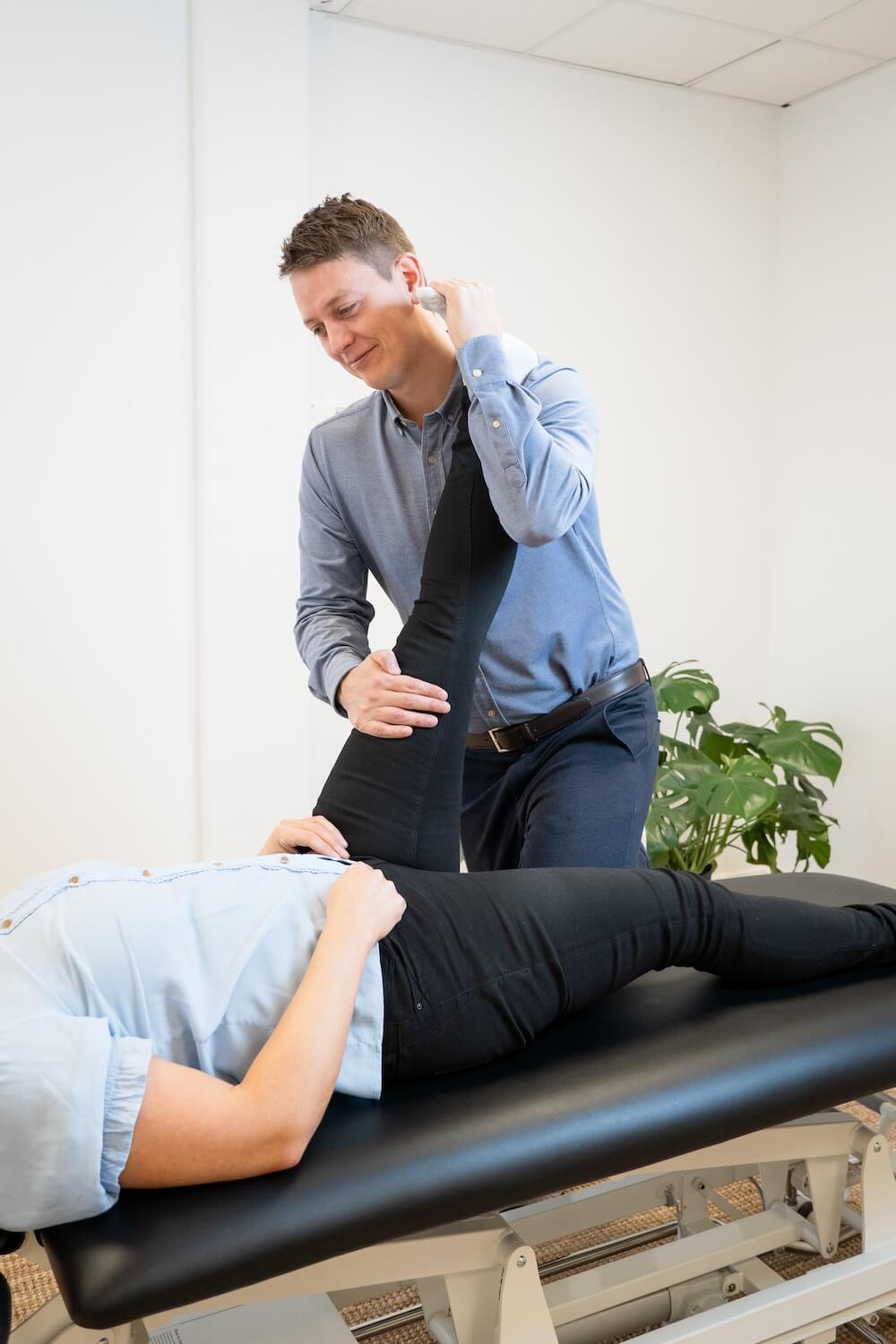
Achilles tendonitis
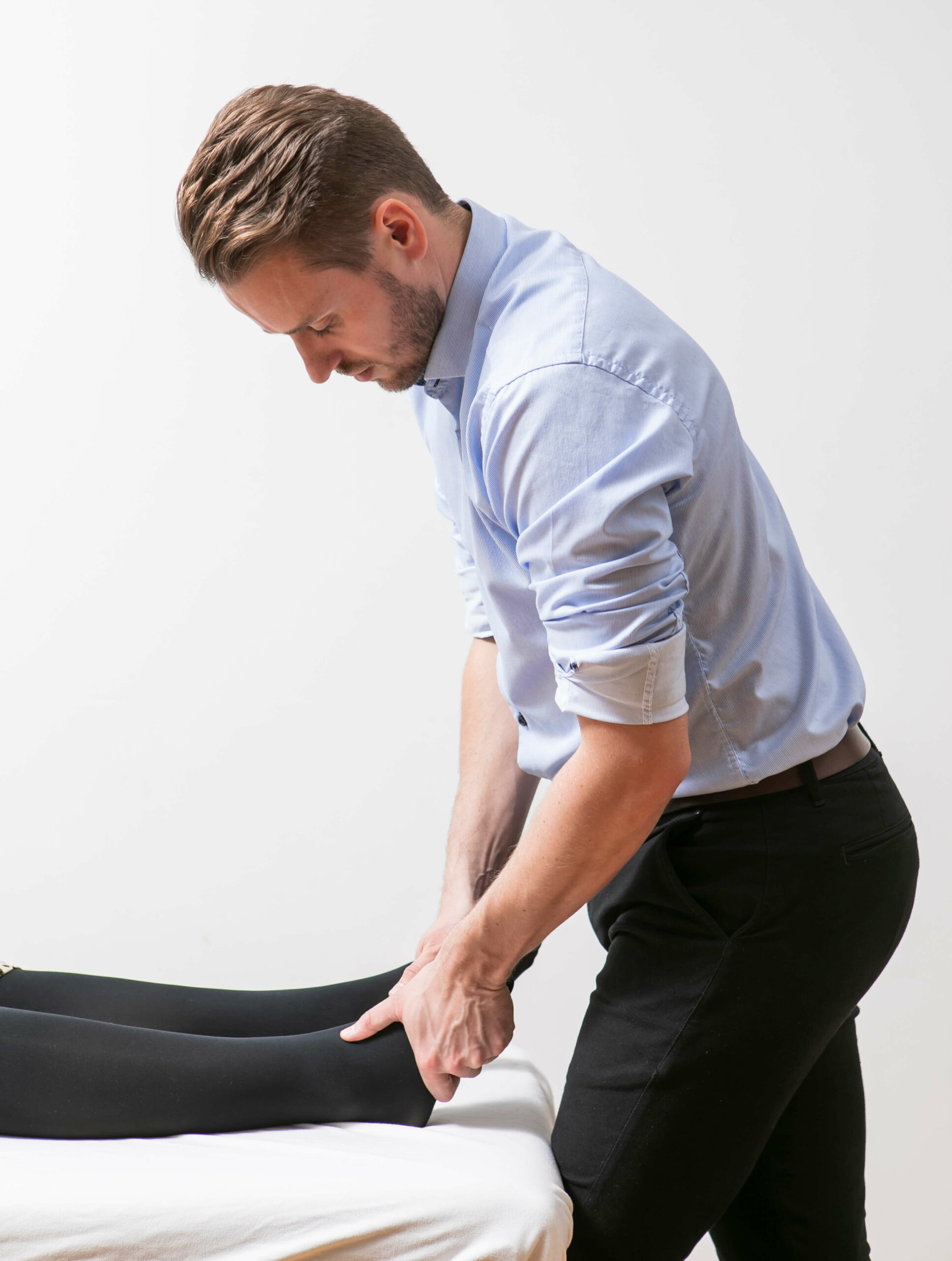
Ankle and foot pain
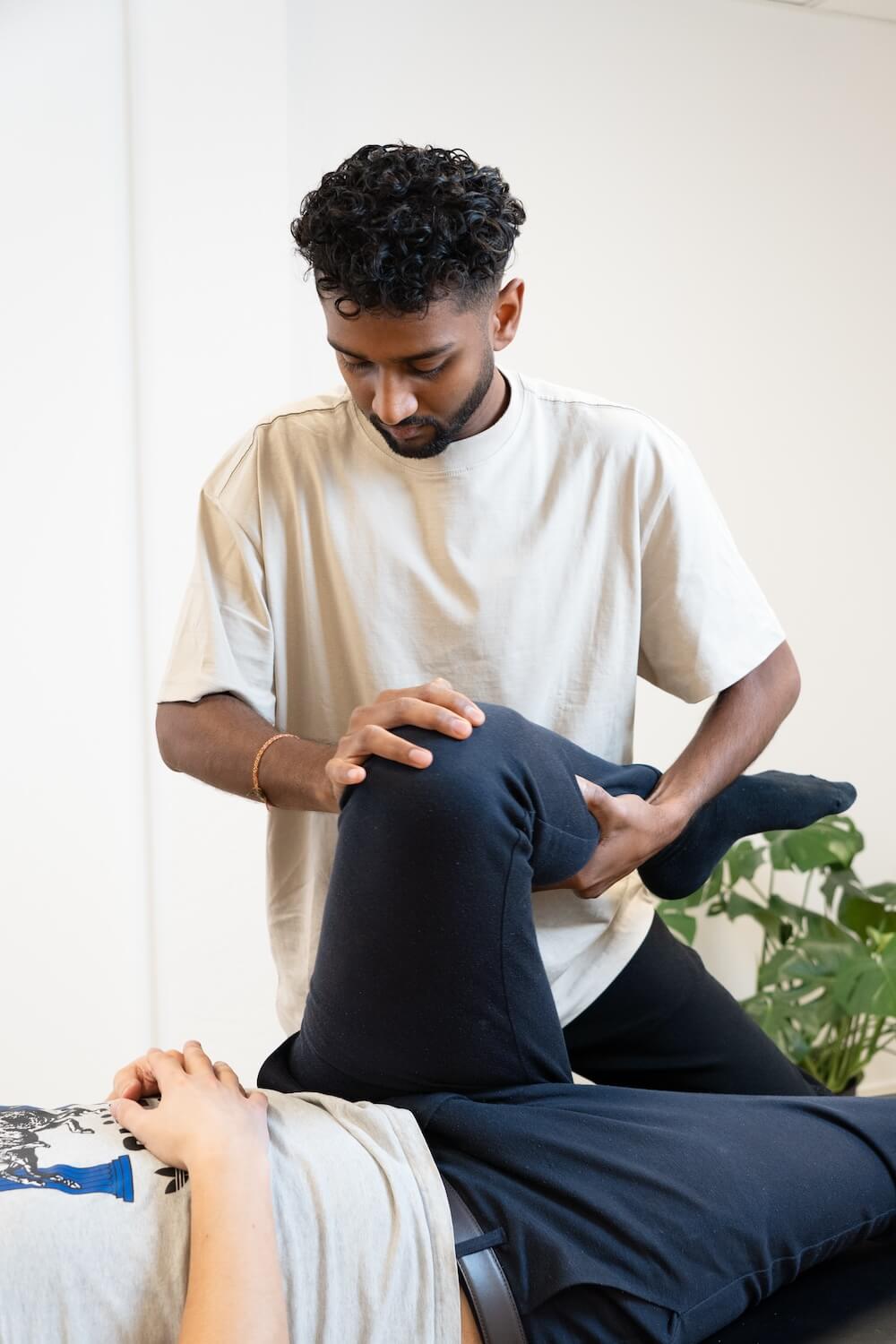
Baker’s Cyst
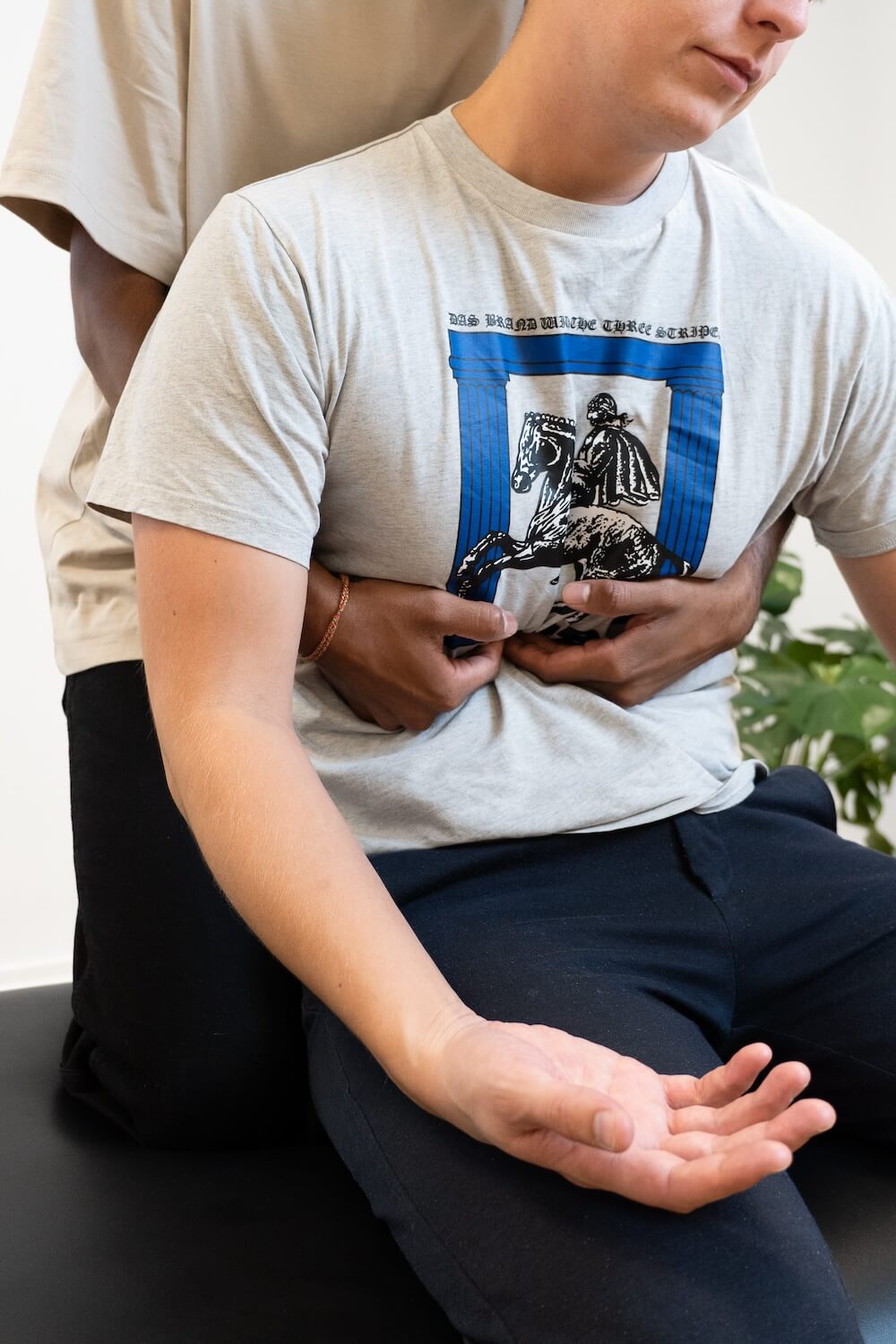
Bloated stomach
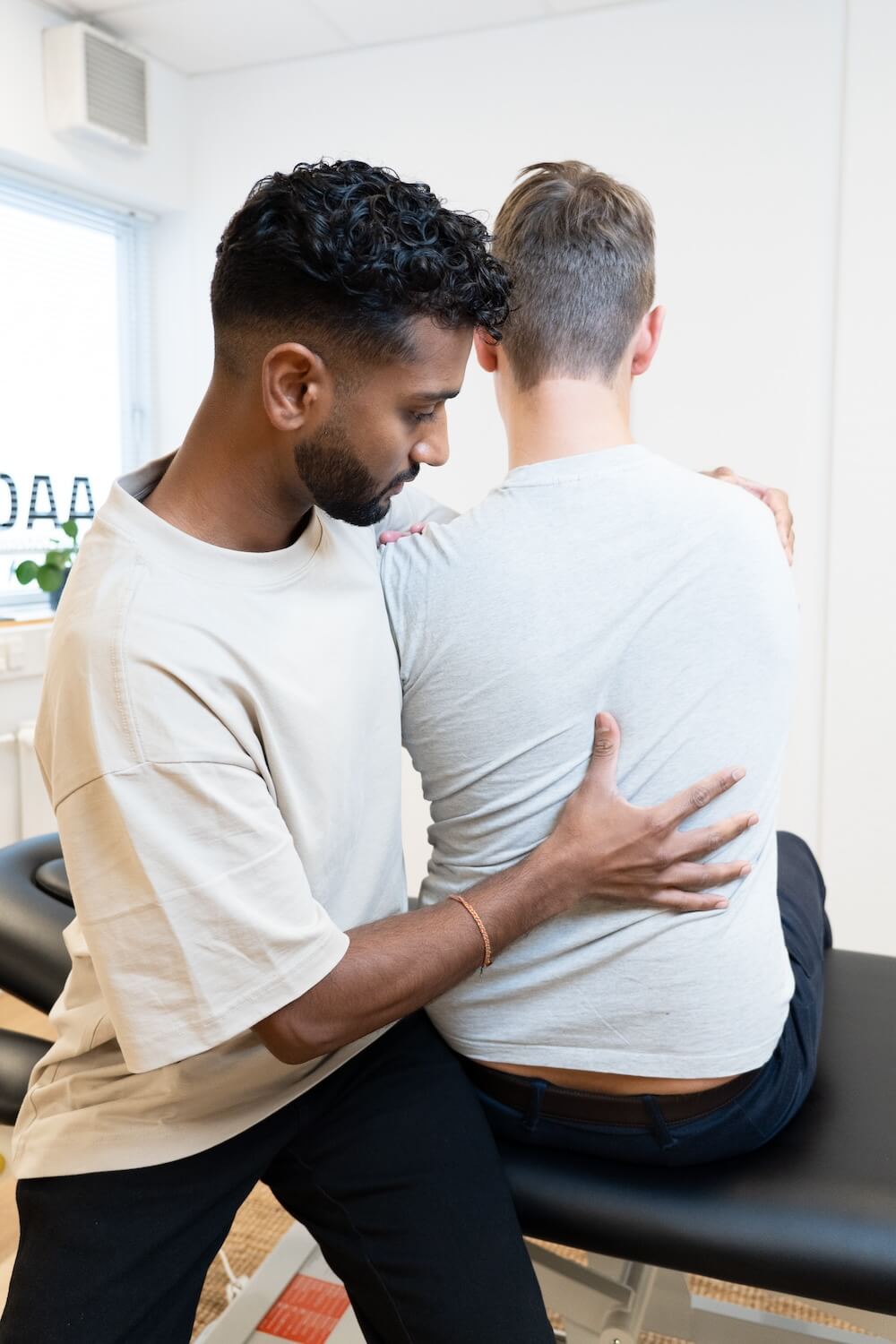
Facet joint syndrome
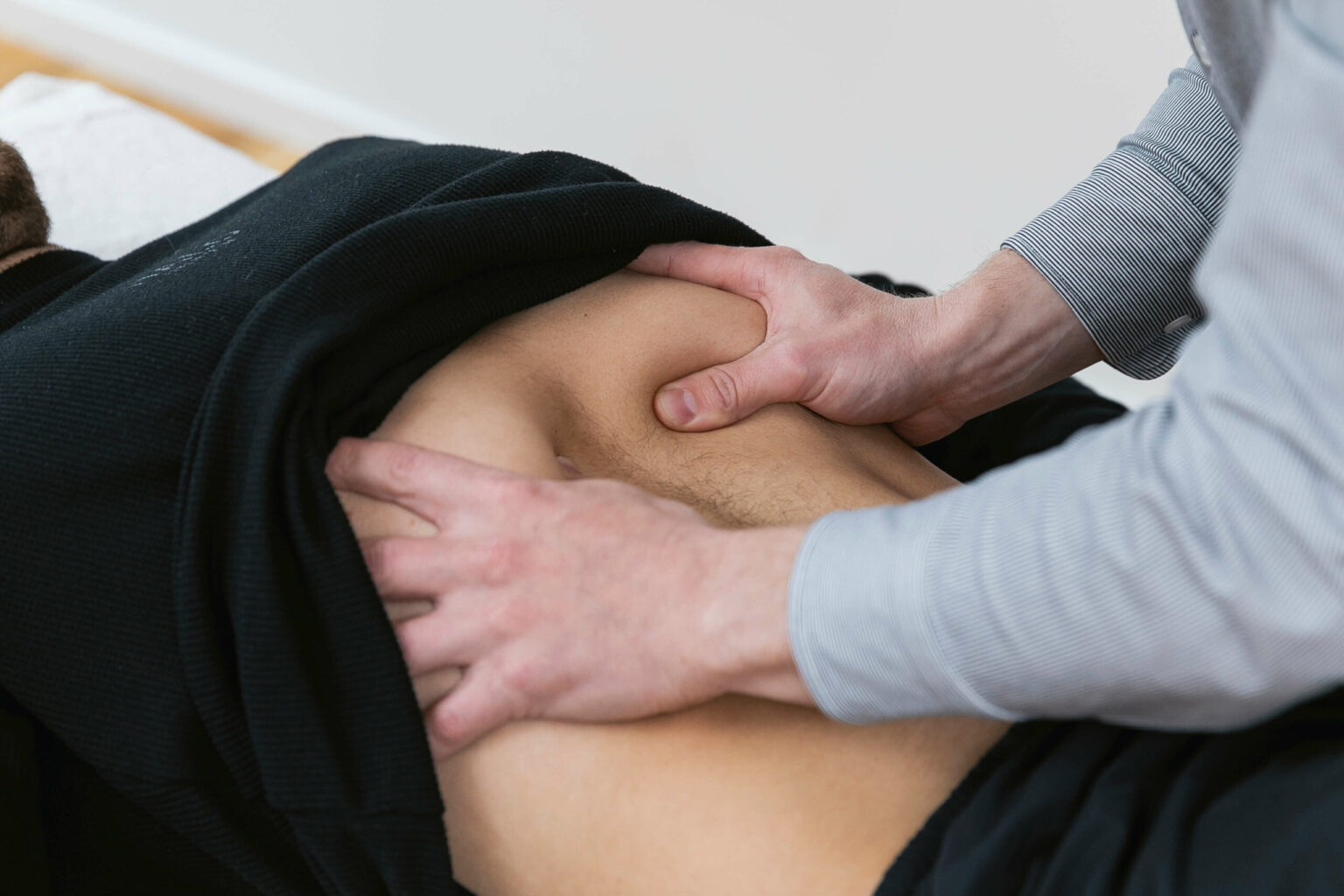
Back pain
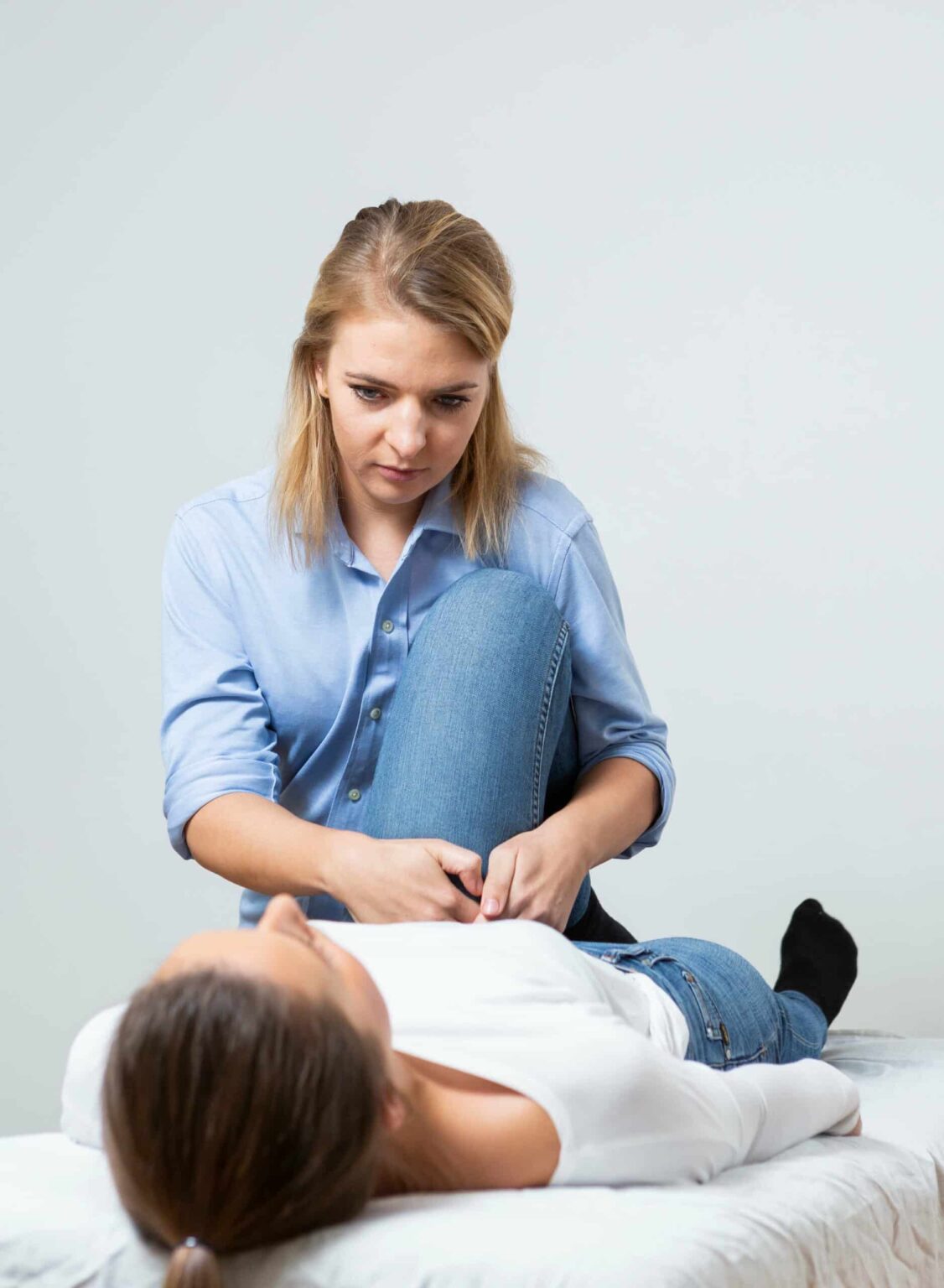
Endometriosis
